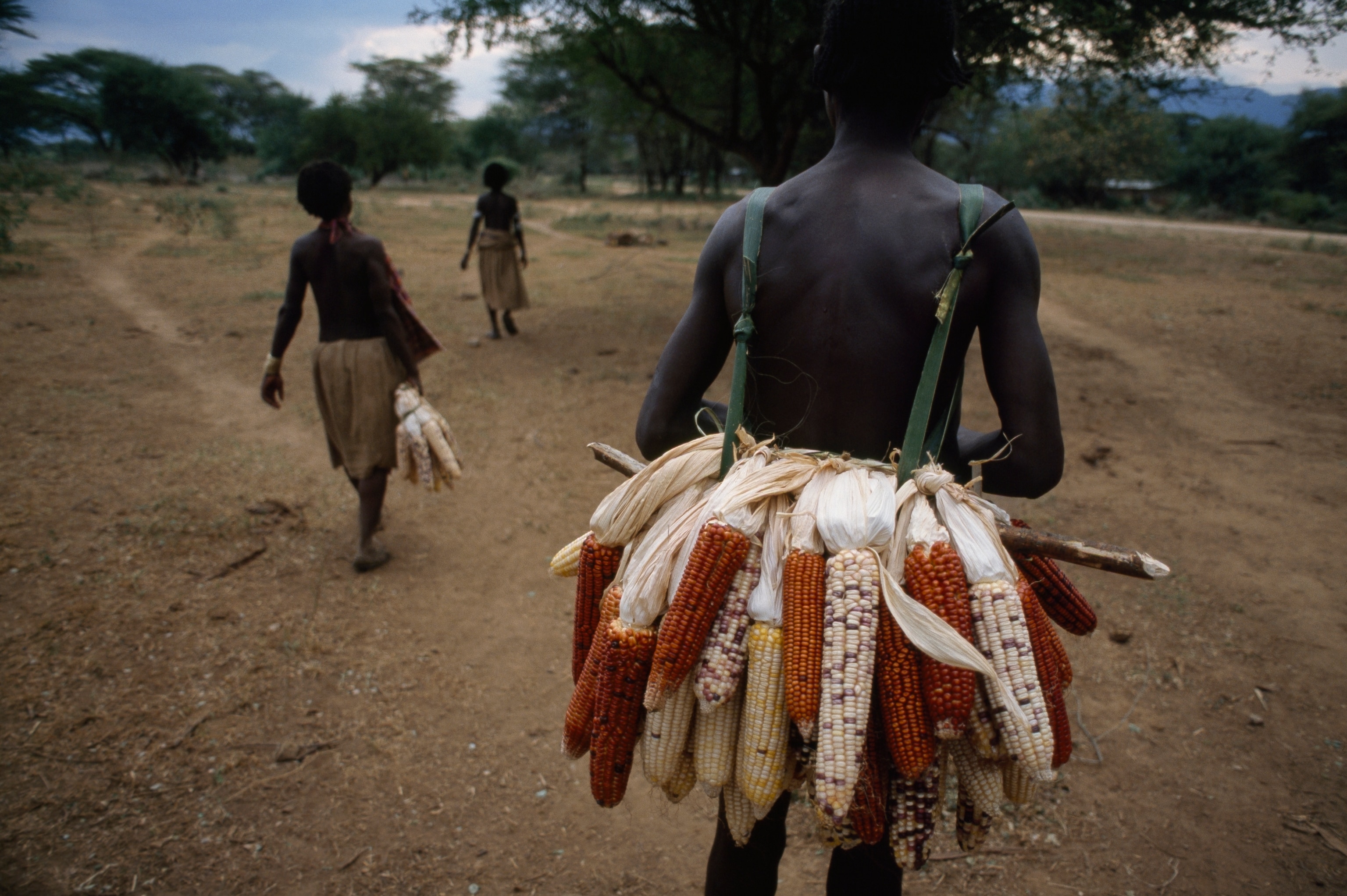
Aflatoxin, a Silent Threat to Africa’s Food Supply
Food supply issues aren’t uncommon in Africa. Famines caused by drought, flood, or conflict are frequent. But there is another constant threat to the continent’s food security that receives little public attention: Foodborne toxins known as aflatoxins.
Produced by fungus in the same way that penicillin is, aflatoxins can cause disease and are blamed for liver cancer. That’s pretty alarming since they largely affect food staples like corn and groundnuts. But there are scientists working on solutions.
The toxins are naturally occurring and exist at high levels in much of Africa’s food supply. Some scientists estimate that up to one-third of Africa’s food supply is infected with aflatoxins at levels higher than the United States deems safe. The Partnership for Aflatoxin Control in Africa (PACA) is working to assess the extent of the infection.
Aflatoxins likely affect more people in Africa than common diseases like malaria and tuberculosis. But because aflatoxins’ effects are so diverse and incremental, it’s not always easy to finger them as the cause of illness. Its symptoms include hemorrhaging, fluid retention, cirrhosis, and failure of the liver. And they are blamed for hundreds of deaths worldwide each year.
“It’s pretty scary because you can’t smell or taste the toxin,” says Barbara Stinson, the project director of PACA and senior partner at the Meridian Institute, which helps companies and governments develop problem-solving strategies. And you can’t rely on sight, either. “The fuzzy, green fungus alone isn’t a dead giveaway that the toxin is present.”
Aflatoxin has been around for a long time, but it wasn’t until a major outbreak in the 1960s that scientists first identified the threat. Over the course of a few months, 100,000 commercial turkeys mysteriously died on farms in England. Dubbed “Turkey X disease,” scientists found that imported feed from Brazil was the common link among the perished fowl.
The culprit? A fungus carried on the feed.
Since then, governments around the globe have worked to limit the amount of aflatoxins that find their way into the food supply.
That’s because in addition to increasing risks of cancer, aflatoxins could help explain stunting. Research shows there’s a positive correlation between aflatoxin exposure and childhood stunting, including lower birth weight and cognitive impairment. Some scientists even think that aflatoxin could explain the short stature of Guatemalans. Stunting could be a result of over 500 years of a corn-based diet ripe with aflatoxins.
“Anywhere there is extensive stunting, I would guess there’s aflatoxins in the food supply,” says Kitty Cardwell, national program leader at the U.S. Department of Agriculture’s National Institute of Food and Agriculture.
The toxin primarily affects crops that grow in the tropics, a zone that around 80 percent of African countries fall in. But the problem is not limited to Africa. Guatemala, Haiti, India, and other south Asian countries are struggling with the toxin too.
In the U.S. and other developed countries, people rarely become sick from aflatoxins. Regulatory systems keep contaminated crops out of commercial food and animal feed. In the U.S., granaries can reject crops if their aflatoxin levels are too high. (In fact, U.S. farmers are permitted to blend aflatoxin-infected corn with unaffected corn, so the toxin levels are below the legal limit.)
“Aflatoxins are one of agriculture’s best kept secrets,” says Cardwell. Controlling them is difficult, since it’s not well known why the fungus produces them in the first place. They’re one of the most studied mycotoxins (toxic substance produced by fungi) in the world, but so many questions about them remain unanswered.
So what is known about them? Stressed-out plants are more prone to infection. Excessive water, insects, temperature extremes–all of these can increase the risk of aflatoxin production. That’s not great news, since climate change will likely contribute more agricultural stressors in the future. Once a fungal infection begins, the toxin blooms rapidly.
What can be done to stop the toxin from spreading? The answer may lie in biocontrol, a mechanism for controlling pathogens and pests with natural enemies. Farmers can box out the poison by introducing a non-toxic form of the fungus that can produce aflatoxin into their fields. “The non-toxic spores tell the poisonous ones to get lost,” explains Cardwell.
Distributing this “good” fungus is difficult though, since the problem is so widespread. That’s why International Institute for Tropical Agriculture (IITA) is developing pilot distribution programs throughout several African countries, including Nigeria, the continent’s most populous nation.
Putting a strong regulatory system in place may be the key to preventing dangerous crops from getting to the marketplace. “Many people in Africa don’t know even know there is a problem,” explains Cardwell. “In the absence of a regulated market, you can’t tell people their food is possibly toxic.” That would create too much panic, she says.
Increased oversight could also improve trade. By reducing aflatoxin contamination to safe levels, Africa’s crops could meet international food safety standards, a move that would hugely increase export potential. “We estimate that Africa loses around 450 million USD to crops that can’t be sold due to contamination,” says Stinson. Controlling aflatoxins would be a boon to people’s health and the economy.
CORRECTION: An earlier version of the story suggested farmers can box out the poison by introducing a non-toxic form of aflatoxin into their fields. The non-toxic form at issue is actually of a fungus that can produce aflotoxin.
Also, an earlier version suggested PACA was developing biocontrol pilot programs. The International Institute for Tropical Agriculture (IITA) is developing biocontrol programs, and they work with PACA.








